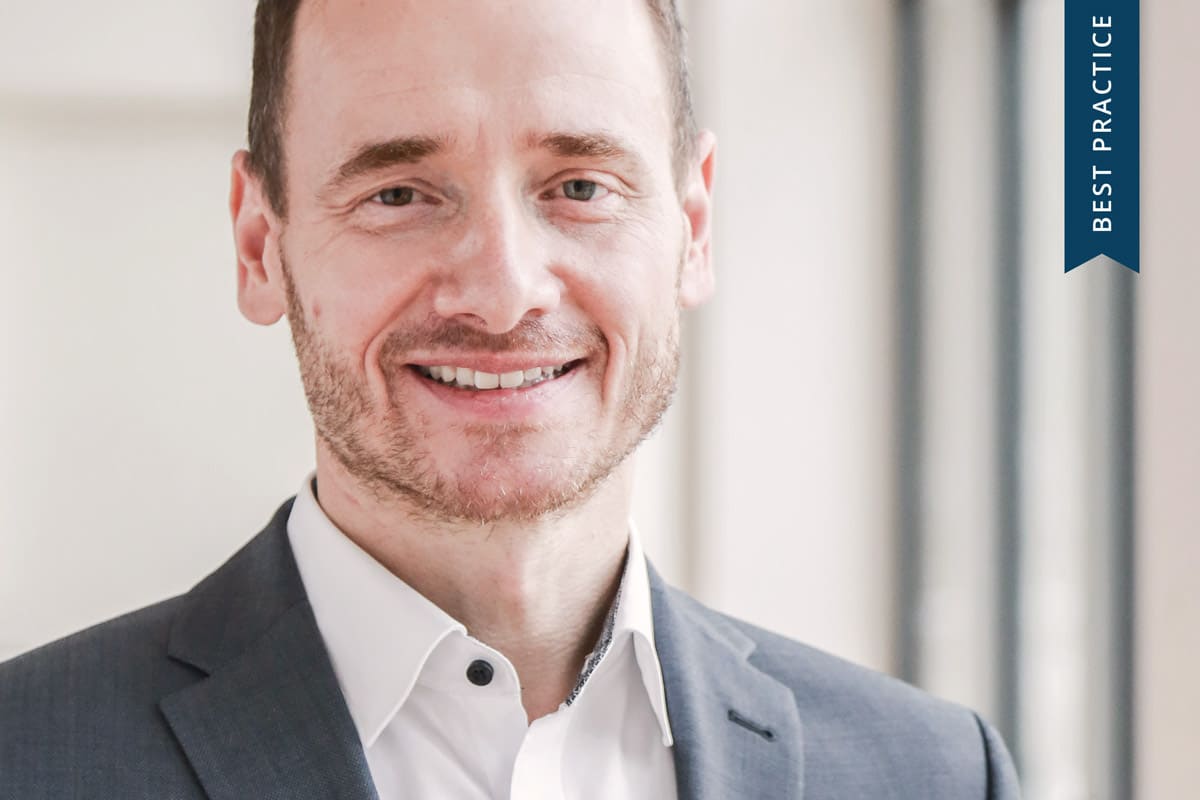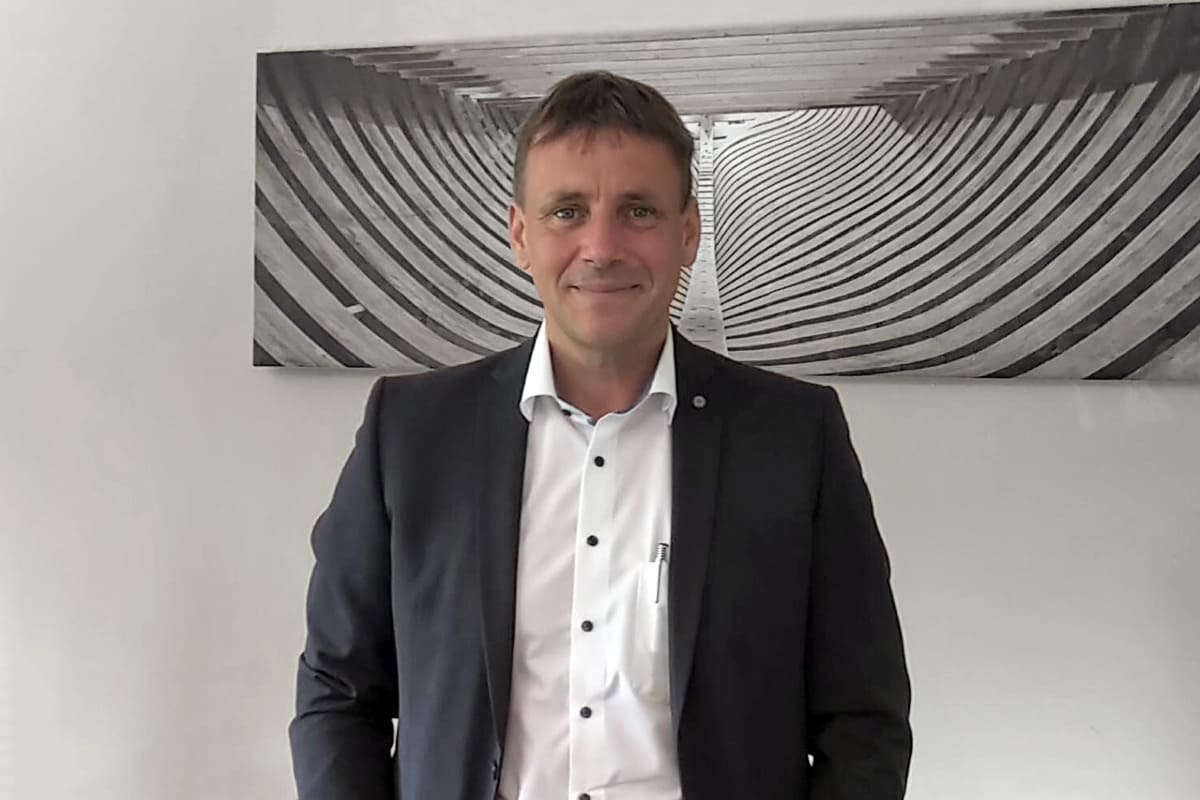Management Summary
Various factors have triggered the change in corporate culture at the BLANC & FISCHER Group. But what is involved in changing the management culture? Who defines the new culture and how can employees and managers be won over to it? Bernd Kratochwille, Head of Corporate Human Resources at BLANC & FISCHER Corporate Services GmbH & Co. KG in Oberderdingen, Swabia.
And at the end, he summarises his explanations in a checklist for cultural change:
- Participatory approach instead of top-down
- Commitment of top management
- Lean approach in the development of management principles, strong focus on implementation
- Operationalise management principles
- Measure implementation
- Work on the system
- Harmonising different organisational systems in complex organisations
- Divide forces
- Be consistent
Click here to go directly to the Checklist.
Leadership culture in transition
Transformation of leadership culture: Triggers
Mr Kratochwille, what was the trigger for developing the leadership culture at BLANC & FISCHER?
There were several triggers for this. I would like to divide them into external and internal reasons:
The external and thus company non-specific factors include the increasing volatility and complexity of our world: This has become very fast-moving anyway, then came the pandemic - an additional accelerator. Many managers were overwhelmed by this situation. The teams were sitting at home and had no longer direct access. The volatility of the markets, including the supplier markets, could only be controlled and managed to a limited extent. The previous methods and instruments reached their limits. In addition, there are new technological and also social demands on companies: digitalisation, for example, or sustainability. These are big buzzwords at first, but if you as a company want to solve the related questions and problems, you have to go new ways and cannot fall back on previously tried-and-tested solutions.
We have defined standards for existing business models. We are good at that. There are processes, methods and structures. But these are not effective when it comes to tackling new, unknown issues. Then it's about other things: dealing openly with mistakes, failing quickly, learning from it, trying out new things, trusting people, letting things run their course instead of regulating and controlling even more.
Today, more than ever, speed is a competitive advantage. And our corporate culture was and still is lacking in speed and exploring new terrain.
In addition to the external factors, there were internal reasons: The newly formulated strategies of our business groups did not gain as much momentum in implementation as we would have liked.
For example, in one of the business groups, the declared goal was to grow much more strongly than before through innovations. We brought in new management for this purpose and, with your support, Ms Walter, we restructured the entire innovation organisation. But that was not enough to quickly and sustainably increase performance in terms of innovation. It became obvious that we also had to create the cultural framework conditions that enable innovation.
The situation was similar in the other business groups: convincing strategy, adapted organisational structures and yet the companies did not make as much progress in implementing the strategy as the management would have liked.
Another reason for a change in corporate culture was repeatedly clear to me in our discussions with employees and applicants: values have changed. There is much more demand to know:
- "What is your company culture like?"
- "How do you lead?"
- "What is the meaning of what I do?"
- "How do you transfer responsibility?"
- "What freedoms do I have?"
And as a company, we have to have answers that fit this understanding of values. Otherwise, we will no longer be able to find skilled workers and managers.
These different factors have led to our decision to actively develop corporate culture. And when we reflect on the fact that corporate culture is defined as the sum of all behaviours in the company, the question arises: Where is the greatest lever to change it? And the answer is: with the managers. They "cast the biggest shadow" every day - positively and negatively.
Triggers at a glance
WHY WAS THE CHANGE IN LEADERSHIP CULTURE NECESSARY?
EXTERNAL FACTORS
The increasing volatility and complexity of the world and new technological and societal demands require a culture that enables rapid action and exploration of new terrain.
INTERNAL FACTORS
The implementation of the new strategy proceeded more slowly than expected.
The understanding of values of employees and also new specialists and managers has changed.
Transformation of leadership culture: Procedure
How much convincing did you have to do to initiate this major cultural change in parallel with strategy implementation and other entrepreneurial challenges?
Basically, there was already an understanding at top management level that, in addition to corporate strategy and structure, we also have to change corporate culture if we want to be a high-performance organisation and successfully implement our strategy
Helpful were also studies which clearly prove the connection between corporate culture and success.
And in addition, the employee survey in one of our business groups showed that we need to change our corporate culture and leadership behaviour in order to increase employee satisfaction.
Three-stage approach for cultural change
SW: How did you proceed?
We have adopted a three-step approach.
Phase 1 | Development of leadership principles and behavioural anchors
As you know, we did not want to develop leadership principles in the ivory tower. A participatory and pragmatic approach was very important to us in order to quickly have something that would be widely agreed upon and enable us to implement it in a targeted way in everyday life.
In the end we were able to acquire a very diverse core team of 25 managers across different hierarchical levels, from different parts of the world and across all subgroups, who, together with you, Ms Walter, your team and our HR project team, developed these leadership principles in three workshops. The guiding questions for this were:
- Which entrepreneurial challenges do we have to master?
- What does our leadership need to be like in order to master them?
- What does leadership behaviour have to look like in everyday life in order to meet the needs of this leadership concept?
The result of these workshops were eight leadership principles as well as specific behavioural patterns that we can use to communicate to managers and employees in an understandable way what this leadership concept means in concrete everyday behaviour and which we can ultimately also use to measure whether we are really living the new concept of leadership.
It doesn't help us if we hang leadership principles on the wall or write them somewhere and say: "Now, dear leaders, do it this way." But we have to describe the behaviour that is derived from these leadership principles and put it into practice.
We have completed the first phase with two Leadership Summit events in which the leadership principles were presented to all managers of the BLANC & FISCHER Group and there was room for questions as well as opportunities for exchange on the topic of leadership.
Phase 2 | Anchoring the new understanding of leadership
We are currently in the second phase, the anchoring phase. In order to anchor the new understanding of leadership in the organisation, we offer in our Leadership Space very different, modern tools. The repertoire ranges from mandatory e-learning to recommended reading, leadership talks with renowned keynote speakers and an optional "Leadership in my team" workshop. In this, the team thinks about how the leadership principles can be implemented together. Every manager can choose from this wide range of tools that help him or her to integrate the leadership principles into everyday life.
A goal that is common to all tools is: we would like to use the events to offer managers the opportunity to exchange best practices, experiences and leadership issues and learn from each other.
Phase 3 | Success measurement
This year, the third step will follow, namely, to make the whole process measurable. On the one hand, we will ask the managers for feedback on how satisfied they are with our proposal to anchor the new concept of leadership.
On the other hand, we will focus on the subject of leadership within the framework of an employee survey. We supplement these survey results with further data, such as turnover rates or sickness rates.
I am very sure that at the end of this year we will have a very meaningful picture of the areas where leadership is in line with the new leadership concept and where there is still a need for action.
THE BLANC & FISCHER GROUP'S APPROACH at a glance
CULTURE CHANGE WITH A THREE-STEP APPROACH
PHASE 1: Develop Leadership Principles with the associated behavioural anchors
PHASE 2: Anchoring the leadership concept in the organisation with the help of various tools
PHASE 3: Measure implementation of Leadership Principles
That is a very structured approach. To what extent have you already adapted the topics of management selection and qualification to the new leadership concept?
Our existing qualification programmes have already been adapted to this new leadership concept. This way, new managers also learn directly what we understand by leadership and what we expect from a manager as part of their induction programme.
Also In the selection of new managers we lay the Leadership Principles as a benchmark for good and desired leadership at BLANC & FISCHER.
One area where we want to become even better is the structured selection of internal junior managers and the active and early promotion of high potential managers.
Transformation of leadership culture: challenges and critical success factors
In your view, what were and are the biggest challenges in this cultural change?
Culture change means changing behaviour. We want to change individual behaviour, some of which has grown over many years and has personality traits. That is a challenge per se.
In addition, many managers are very strongly challenged and partly overwhelmed due to the market situations described at the beginning. As a result, they feel this change as an additional burden. Therefore, it is imperative to adapt the implementation speed as well as to put the importance of this new leadership culture on the agenda again and again and address at the different management levels that this cultural change needs time and space.
What do you see as critical success factors in this process?
Role model effect
A key critical success factor is the role model effect of top management. Fortunately, all of our C-levels really stand behind new leadership principles and also represent this strongly in a wide variety of contexts. It is important that leadership and leadership culture always become part of C-level communication and central workshop agendas. This continuous management attention on the subject of leadership is important to keep it permanently relevant in the organisation.
Sabine Walter: That is an interesting point you raise. We too experience the issue of role modelling as crucial in other cultural transformations. But role modelling, I think, is made up of two aspects. One aspect is the one you mentioned, communication - be it in the context of town halls, staff meetings or information letters. The other and perhaps much more important aspect is the day-to-day interaction of C-levels with their direct managers or employees. At C-level, I have to demonstrate the leadership behaviour that I demand from everyone, otherwise I am not credible, the cultural change is not credible and acceptance for it dwindles.
This brings me to a question we discuss with many organisations:
What do I do with excellent professionals who, due to their personality, cannot fulfil some of the leadership principles, but are professionals I do not want to lose?
This is a very central question which we are approaching bit by bit in order to give an answer. At the moment, we are pursuing a more positive approach through proposals and support based on the assumption that all managers can and want to follow this path.
Consistency is necessary
It could be that in the course of the process we see that not all leaders are equally on board. And that's where consistency is needed.
But consistency does not mean that these leaders will not have a place in our organisation. Consistency means that we discuss with them which role is more suitable for them in the future. Some leaders already formulate this themselves and do not feel comfortable in the leadership role. For many, leadership was the only way to advance professionally.
Alternative career paths must be developed
The one-track career path, which only leads to leadership responsibility, brings with it two problems: Firstly, we weaken people's professional expertise because we burden them with staff leadership. Secondly, we gain a weak leader, which leads to frustration, dissatisfaction and possibly (inner) resignation among employees. This makes absolutely no sense from an entrepreneurial point of view.
This means that we as a company are challenged to show alternative career paths that allow excellent professionals who are not comfortable with leadership to develop.
If we succeed in this, we will not only manage to make members of our organisation more satisfied with their role and task, we will also increase the effectiveness of leadership, as in the future only people who want to take on this role will do so.
Of course, there may also be cases where people so clearly violate our leadership principles that we no longer see a place for them in our company. This could be difficult in individual cases, but might be necessary for the company as a whole.
By the way, the question of consistency is coming up more and more often internally. And with the upcoming measurement, we are of course also putting ourselves under pressure not only to measure, but to act. Otherwise, it would massively damage our credibility.
Sabine Walter: I take up this idea. When you say we need consistency, it also means we need consistency in filling C-level positions, especially when it comes to attracting new C-levels to the company. Two questions:
To what extent are the governance principles known to the board of directors and the shareholders? And how strongly do they support them?
Both our board members and shareholders are aware of the project and are following it with great interest. The shareholder families care very much about the culture of their company BLANC & FISCHER and are fully behind these leadership principles. I know that personality, personal fit to the culture, leadership, understanding of leadership also play a major role when filling C-level positions.
Structure creates culture
Another success factor is working on the system. So far we have been working exclusively in the system. This means that we are trying to change the behaviour of managers in the existing system.
I am convinced that a very important lever for the cultural change we are striving for will be the work on the system. We must, and we will this year, ask the following question: "How well are our processes, structures and tools in line with the governance principles?"
There are a variety of processes and systems that influence leadership and corporate culture. We will put these to the test and ask ourselves how well these structures are in line with our leadership principles.
The beauty is: we in HR are responsible for many of these systems. Let's take the example of our variable remuneration and target agreement system. We could agree on leadership targets and link part of the remuneration to them, or change the entire process of target agreement, review and remuneration, thus reducing transaction costs and at the same time establishing completely new forms of corporate governance. This year, we are already testing the OKR framework (OKR = Objectives and Key Results) for ourselves, with which goals are formulated in a much more agile, transparent way and with the participation of the employees.
One topic that is also on the list and that we will already change this year is the Staff development interview. Until now, the process was very formalistic: the manager evaluates the employee's performance based on a competence catalogue and compares this view with the employee's view. The focus was exclusively on the employee's performance.
In future, there will be an interview guide instead of ticking off a more or less fixed catalogue of criteria. We want the staff development interview to be characterised by dialogue and genuine exchange. That is why we also integrate Supervisor feedback as an obligatory part of the interview. Leaders should actively seek feedback on their leadership work and ask questions such as: "What do you appreciate about our cooperation?", "What can I do more?", "What should I pay more attention to in the future?" and "How can I support you even more actively in your development?"
I know that there, too, the devil is in the implementation. There will be managers who will get a lot out of this feedback for themselves and for the cooperation. Others will ask more mechanically. But it is a starting point for creating cooperation at eye level.
I could continue with examples. But I think it becomes apparent how important it is for us as a company to also work on the system and change formal structures so that they fit the desired culture. Working on behaviour is not enough to lead such a cultural transformation to success.
Conclusion | The Changing Leadership Culture - Best Practice at BLANC & FISCHER UNTERNEHMENSGRUPPE
What recommendation would you give to other companies pursuing the same goal?
Checklist Transformation of leadership culture
1 | Participatory approach instead of top-down
Involve managers and staff as early as possible in the development of the new concept. This gives you more perspectives that can result in a better solution. Above all, however, acceptance of the new concept increases.
2 | Commitment of top management
Ensure the commitment of top management. Top management must stand behind such a project, actively advocate for the desired leadership culture and exemplify the principles.
3 | Lean approach to leadership development, strong focus on implementation
Do not focus on the number of leadership principles. It probably could have been six or ten leadership principles instead of the eight we developed. Crucial is: Are these principles supported and are they implemented?
4 | Operationalise leadership principles
Describe leadership principles with concrete, observable behaviour. Otherwise, implementation is hardly possible.
5 | Measure implementation
Measure the implementation of leadership principles. Measurability makes it possible to make successes and fields of action visible and to establish commitment in a cultural change.
6 | Work on the system
Question and develop processes, structures and tools based on leadership principles and develop these further so that they fit the new leadership concept.
7 | Harmonise different systems of order in complex organisations
Sort and harmonise in complex organisations, as we are with our business groups, the different organisational systems (value systems, competence models, etc.) of the individual companies so that these do not lead to confusion among employees.
8 | Divide forces
In the implementation phase, adjust the pace to those who need to process information and innovations to make sure that it doesn't become too much. Such an implementation is not a sprint, but rather a marathon, where you have to manage your strength well.
9 | Be consistent
Be consistent. Even though I cannot speak from experience on the last point, I am convinced that consistency is part of it and that we will find a role for leaders who do not want to or cannot follow the new path that is more in line with their strengths and abilities.
Dear Mr Kratochwille, thank you for this very interesting exchange. I wish you all the best in the further implementation.
About Bernd Kratochwille:
Building on a degree in Dipl.-Psychologist at the University of Koblenz-Landau as well as a part-time course of studies to become a Master of Business Administration (MBA) at the ESB in Reutlingen, Bernd Kratochwille took on various positions in HR during his professional career. After working for PAUL HARTMANN AG in Heidenheim and Spain as well as the Witzenmann Group in Pforzheim he is now responsible for the Human Resources management of the BLANC & FISCHER Group in Oberderdingen with a turnover of EUR 1.45 billion and 9,000 employees worldwide.
Did you find this article helpful?



